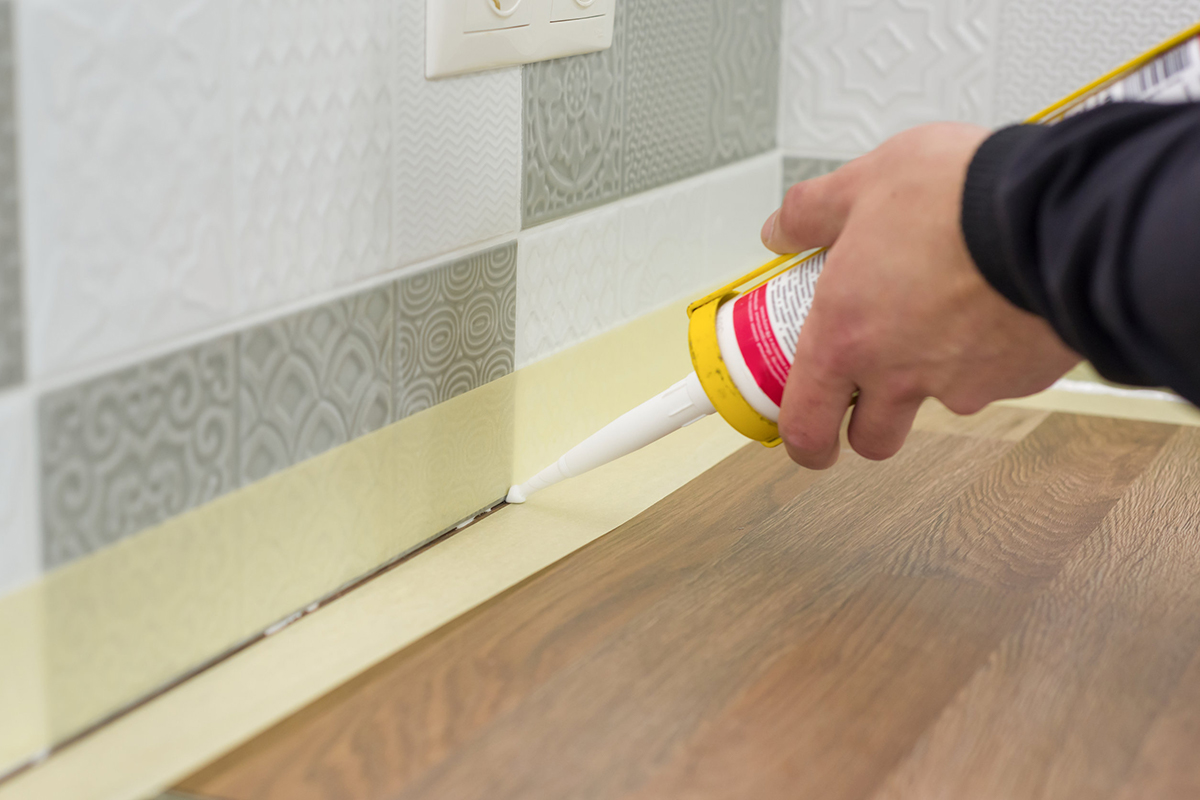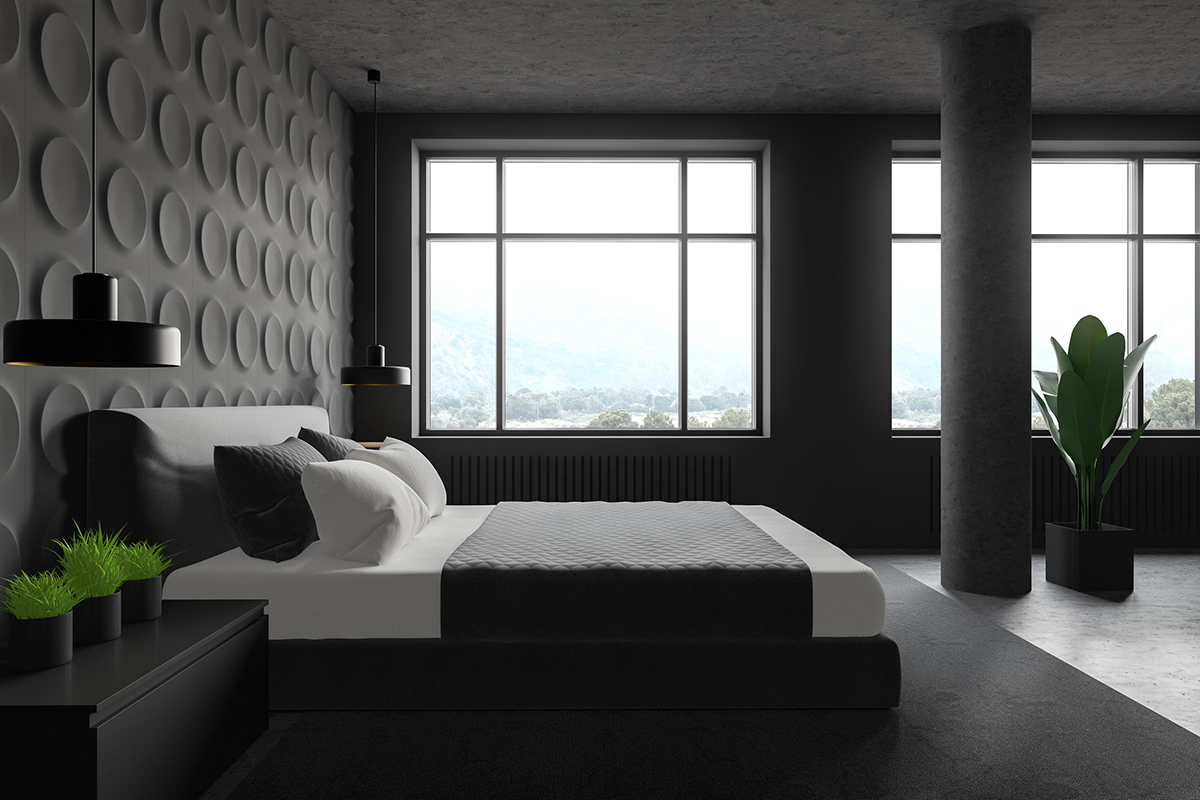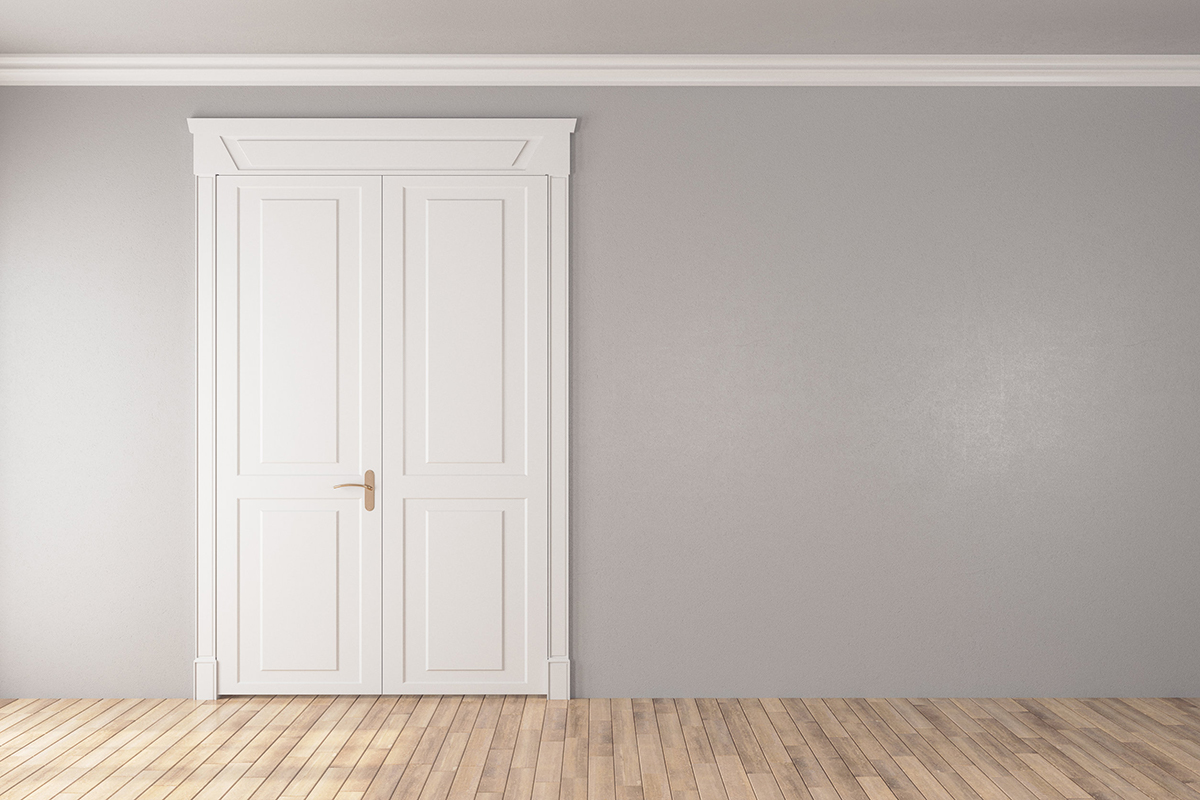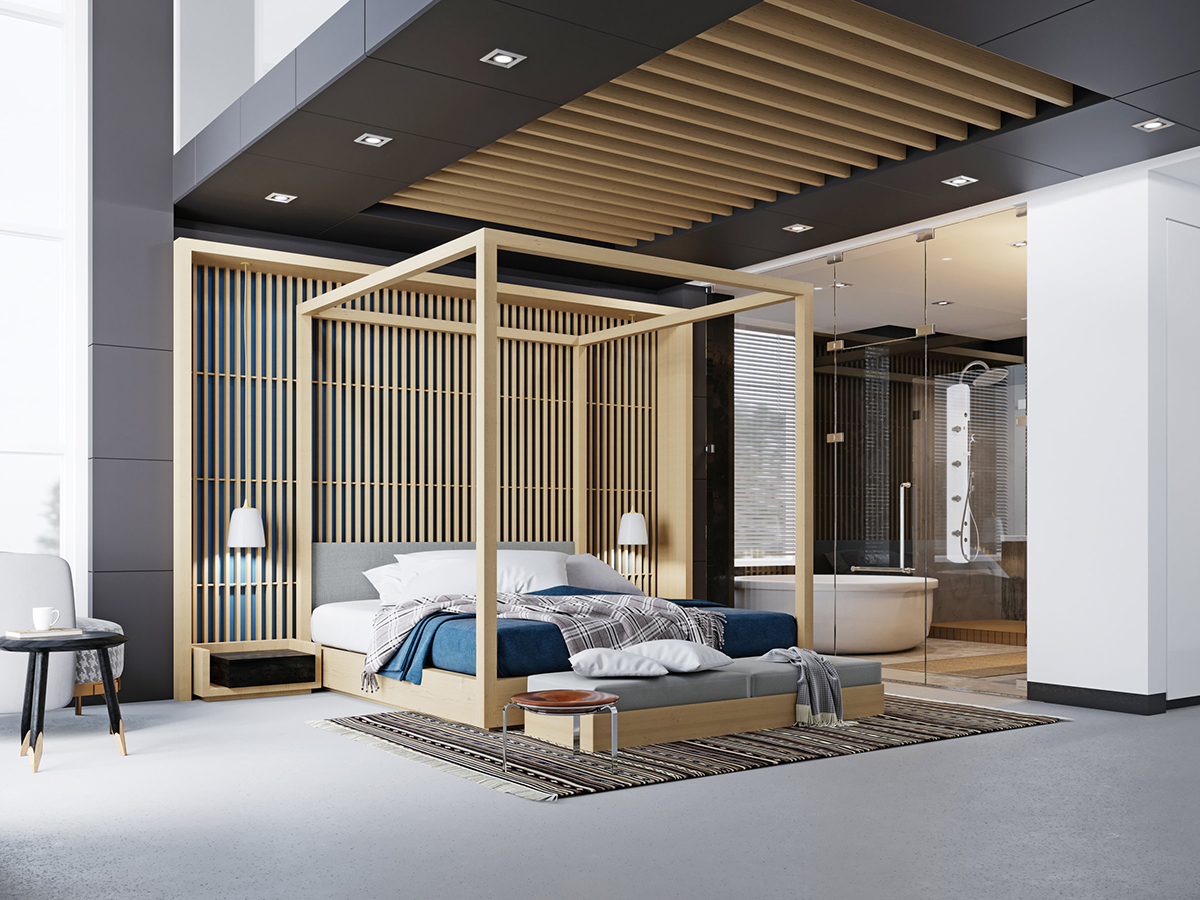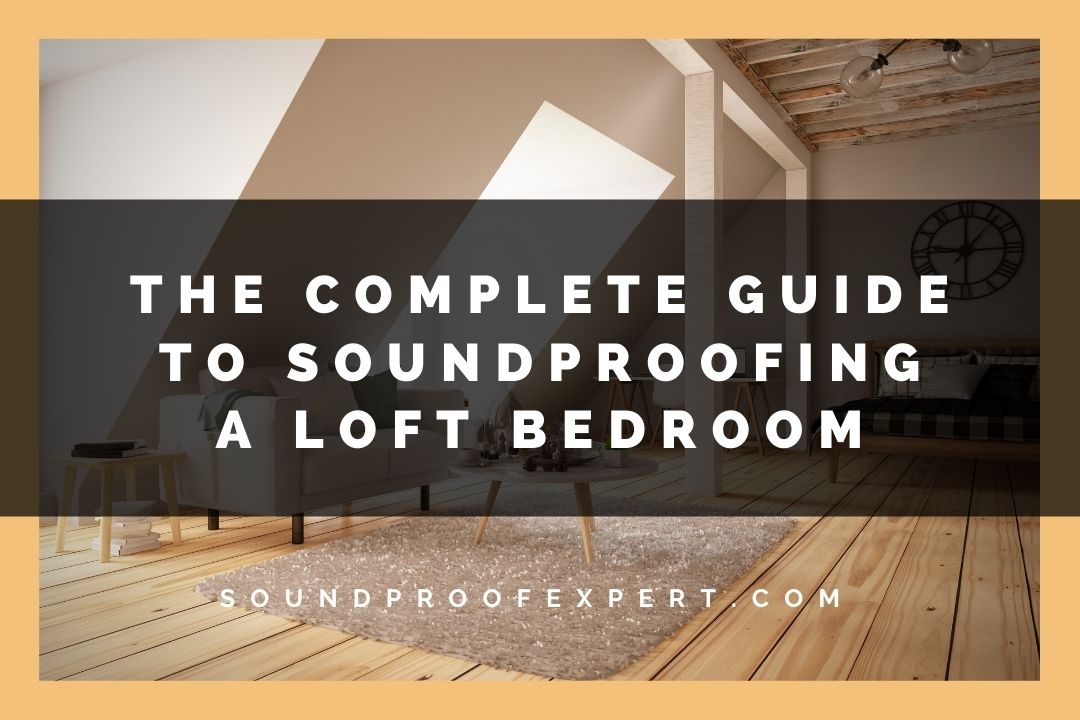
Converting your loft to a bedroom is one of the best ways to make use of the empty space available to you.
However, you don’t want the bedroom to be uncomfortable due to noise from below or one where the noise from activities inside can filter out and disturb house occupants and neighbors. Soundproofing prevents this problem.
Here’s how you can soundproof a loft bedroom:
- Heavily soundproof the floor.
- Buff out the walls and soundproof them.
- Soundproof the windows.
- Soundproof the ceiling area.
- Soundproof the door.
Focusing on these five areas will give you a near-perfect soundproof loft bedroom. The rest of the article will look at how you can complete the soundproofing in the above areas.
1. Heavily Soundproof the Floor
When soundproofing your loft bedroom floor, there are three main options available to you. Let’s take a look at each of them:
Increase the Floor Mass
Increasing the floor mass in your loft bedroom is a perfect way to reduce noise transmission.
Impact noises typically begin as vibration. Therefore, making the floor heavier makes it less likely to vibrate. There are many products you can go with here.
A good option is the Xin & Log Acoustic Wedge Studio Foam (available on Amazon.com). This product is designed to reduce reverberations to negligible levels. Stacking a few layers together can give you the right floor mass for your bedroom loft.
If you don’t like the design of the Xin & Log product above, you can go with the Dynamat Thick Self-Adhesive Sound Deadener (available on Amazon.com) mat. This mat will deliver similar results, but it has the added benefit of providing external thermal insulation.
You don’t have to use these products alone on your floor. You can hide them under a more attractive flooring material if you wish. Throw some beautiful carpet over any of these to get a soundproof high-mass floor. Carpets work best when you need a floor cover because they’re good at muting noise.
Add More Insulation
The loft floor cavity needs to be taken care of when you’re soundproofing your bedroom loft. The space between them acts like a kind of echo chamber where sound waves bounce off the surface and reverberate, making small sounds louder than they should be.
You can reduce sound transmission to the barest minimum by filling up this cavity using the right material. There are many options for materials available for you to use here, but mineral wool insulation is typically the most commonly recommended. The open structure of the material allows it to absorb sound.
If you choose to go with mineral wool insulation, it’s important to ensure you don’t pack the material too tightly. The material works best without any compression. A side positive of using mineral wool is that it also offers thermal insulation. So, you can solve two problems with one solution.
Construct a Suspended Floor
Building a suspended floor is a challenging option because it will cost the most among all three options. However, if you can pull it off, you’ll be able to almost completely prevent any impact noise from reaching the room below the loft.
To create the perfect suspended floor, you’ll need to lay the floor beams on different joists. The materials you’ll need for this project include the following:
- Acoustic caulk
- MDF
- Sound clips
- Resilient channels
After you’ve gathered the materials you need, you can proceed with building your new floor. Here’s what you should do:
- Line the resilient channels along your existing ceiling joists.
- Connect the sound clips.
- Lay some MDF sheets over the channels and clips.
- Seal off all gaps between the MDF sheets with your acoustic caulk.
- Fill up the cavity with mineral wool insulation.
Your MDF sheet will become the new loft bedroom floor. Some homeowners recommend laying a new set of floor joists specifically for this purpose. Either way, you’ll get good results.
However, a major disadvantage with this option is that it further elevates the floor in the loft bedroom. You should ensure it doesn’t encroach too much into the vertical space in the room. Otherwise, you may find the room is suddenly a lot more uncomfortable. Using the resilient channels option is less likely to encroach into your space.
Using any of the three options above will ensure your loft bedroom floor is properly soundproofed.
2. Buff Out the Walls and Soundproof Them
Walls aren’t always a source of sound leaks in or out of your loft bedroom, but it helps to ensure they are as soundproof as possible. The amount of effort you’ll put in here comes down to the height of your loft in relation to nearby buildings.
If your loft bedroom is essentially on what would count as the fourth or fifth floor of a building, it won’t need as much effort as one surrounded by higher buildings. Here are some tips you can work with here:
Add Some Mass
The principles of adding mass to your loft bedroom floor also apply here. You can increase the wall mass by adding an extra layer of drywall or installing some acoustic insulation panels over them. Consider buying some deadening mats like the Dynamat Deadener mentioned above and then hide them under drywall sheets.
Consider Wall Decoupling
Decoupling a wall is similar to building a suspended floor as covered above. You just need to fit your resilient channels and isolating clips and then hang up your drywall. The labor required is less intensive compared to constructing two sets of studs. With the drywall installed on the new channels, you can keep sounds out or in.
Insulate the Wall Cavity
Packing your loft bedroom’s wall cavity with mineral wool insulation is a great way to improve its sound absorption. You can use this approach when building a new loft or insulating the building’s existing wall. Mineral wool insulation works great when combined with drywall.
Pay Attention to the Pipes
Pipes carry noise well. You should watch for them if you live in an older building. Most of them have their hot water tanks in the loft, so pipes are bound to crisscross the area or in the ceiling cavity just above the top floor. The pipes may also be HVAC or plumbing, depending on the building’s overall layout.
If you have such piping in your loft, you should pay attention to them when soundproofing your loft bedroom. You can insulate the pipes with fiberglass pipe wrap. The Thermwell Frost King Fiberglass Pipe Wrap is a good option here. It’s highly durable and easy to install. Rubber pipe or polystyrene insulation might cross your mind here, but they’re only useful for thermal insulation and won’t do much for sound.
3. Soundproof the Windows
Lofts aren’t designed to have windows. If you’ve installed windows on yours, then it’s likely that they’re double-glazed units that typically have some soundproofing capabilities.
If you’re yet to install windows in your loft, you should consider going a bit further to triple-glazed units. They’re not very different from the double-glazed variants, but they give you an extra layer of glass to keep noise transmission to the barest minimum.
You should also weatherstrip the windows around the area where they meet the frame.
Weatherstripping is often associated with thermal insulation, but it can also work for soundproofing. Sound can also pass through the same small gaps as heat.
You can complete the soundproofing of your windows with some acoustic caulk. Acoustic caulk is the better option because it won’t crack with time.
4. Soundproof the Ceiling Area
You can soundproof the ceiling area as you did above with the floors and walls. In some loft designs, the ceiling and wall are essentially the same.
If yours are clearly distinct, you can either use the decoupling approach or just focus on increasing the mass and insulation on the ceiling to keep sound from going outside. Make sure you don’t leave any gaps. Seal off any gaps that you do find with more insulation material if possible or with some glue (if too small).
5. Soundproof the Door
Due to their position, loft bedroom doors are not the biggest conduit for noise into and out of the bedroom. However, you can make your room more soundproof if you include the door in your plan. The first step you should take here is to add more mass to counter the hollow structure of most loft doors.
You can use deadening mats or loaded vinyl here as well. After installing the vinyl, you can cover it up with a layer of wood or fabric if you don’t like the look of the mat or vinyl. Don’t forget to seal all gaps around the door and the frame.
If the door to the loft has seen a lot of wear, you can consider removing it and installing a new soundproof door. However, that’s extra expenses you probably didn’t account for.
FAQs
Is Loft Bedroom Soundproofing a DIY Job?
Loft bedroom soundproofing is a DIY job if you have the technical skills required to get it done. An experienced DIY enthusiast can complete the job alone.
The bulk of the process involves installing deadening mats or mineral wool insulation. If you know how to measure the materials before cutting and installing them, you can complete the job on your own. However, if you have concerns about your skills, it’s always better to hire an expert to get the job done and save the risk of wasting time, energy, and money.
Do You Have to Soundproof All Parts of the Loft Bedroom?
You need to soundproof all parts of your loft bedroom to ensure the space is as soundproof as possible. However, some parts of the process are more important than the rest.
You should first soundproof your loft bedroom floor because it’s the biggest conduit for noise. The walls and ceiling should be next after the floor, and you can save windows and the door for last.
What Kind of Noise Will You Keep Out By Soundproofing Your Loft Bedroom?
Soundproofing your loft bedroom will keep out all kinds of noises if done correctly. Noises from external sources will be mostly kept out by your wall and window soundproofing, while the floor and door soundproofing will keep out those from within the house.
However, all the parts of the loft have to be soundproofed for the best results. Airborne noise from traffic, voices, sound systems, and pets will likely be your main concern if you’re trying to keep noise out of the room, and adequate soundproofing can help with that.
You will also need to watch out for noise caused by your activity in the loft bedroom. Noise from footsteps as you walk across the floor can be a source of disturbance to other people in the room, and soundproofing the floor also keeps out self-induced noise.
Should You Soundproof Your Loft Bedroom Before or After Construction?
You should soundproof your loft bedroom as you do the conversion. It’s easier to add the necessary materials at this time. However, many people have successfully soundproofed their loft bedroom months or years after their conversion.
If you’re yet to complete the loft bedroom conversion, it’s always a good idea to start the conversion right now if you can afford it. However, if you can’t afford it for now or have already completed the conversion, you can start the process when you’re ready.
How Much Will Loft Bedroom Soundproofing Cost?
Soundproofing your loft bedroom can cost up to $3,000. Final costs will depend on the shape and size of your loft area and the choice of materials you use.
Studio foam is cheaper to install than a noise-deadening mat. Similarly, using insulation material on an old loft door is also cheaper than installing a new soundproof door.
However, people often find that more expensive items are more effective or work better for their space. You’ll have to make the final decisions, and these decisions will impact the overall cost of your project.
Aside from the materials themselves, the size and shape of your loft will also impact the cost. You will need to buy more materials the bigger your loft is – which means you’ll spend more on your soundproofing project.
Why You Should Soundproof Your Loft Bedroom
You may be wondering if it’s really necessary to carry out the soundproof process. However, soundproofing can have a ton of benefits for you and your loved ones, including:
Increased Privacy
Soundproofing your loft bedroom helps keep activities going on in the room inside. Your neighbors don’t need to hear your phone conversations or the dialogue going on in the movies you’re watching. Similarly, you don’t have to cope with airborne noise when you’re trying to get some rest in the bedroom.
Better Heart Health
Dealing with too much noise can actually negatively affect your health. According to this study published in the National Library of Medicine, too much loud noise can lead to cardiovascular diseases such as stroke, myocardial infarction, coronary heart disease, and hypertension. With this in mind, soundproofing your loft bedroom can help your cardiovascular health by giving you more time in tranquility.
Reduced Risk of Hearing Impairment
Exposure to extremely high levels of noise can cause hearing impairment. Unfortunately, many people are currently living around extremely high sound levels bad for their auditory health. It’s no surprise that the WHO has stated that up to 2.5 billion people may be living with some hearing loss come 2050.
You can ensure you’re not a part of that statistic by soundproofing your bedroom loft, especially if you’re planning to spend 8-12 hours there per day.
Improved Cognitive Function
People exposed to excessive noise pollution will notice a decline in their ability to learn and understand. Such extreme noise levels can affect your ability to recall, solve problems, and more. The situation is worsened when you throw sleep disturbance into the mix.
So, if you want to always stay alert and avoid losing your cognitive function, you’re better off soundproofing your loft bedroom.
Improved Comfort
Do you always have to go out to a pub to watch your team play because you don’t want to disturb the rest of your family? Soundproofing your loft bedroom solves that problem. You can fit out the bedroom with a television and not worry about the sound filtering out. You don’t have to watch the TV on mute anymore or muffle your sounds as you ride the game’s ebb and flow.
Conflict Prevention
If your loft bedroom acts as your entertainment or relaxation hub, you may end up getting into a conflict with your neighbors or any other people in your home if things get a bit noisy within your space. Soundproofing will keep the noise in (especially if you’ve adequately protected the floor and walls) and reduce noise complaints.
Final Thoughts
Soundproofing your loft bedroom is a straightforward process. It begins with soundproofing the floors and walls and extends to the windows and doors. The floors and walls are the main conduits for noise, so focusing on them alone can significantly keep disturbances in or out of the loft bedroom.
You’ll need to know how to install insulation materials and dampening mats to complete the soundproofing process. It’s a DIY process you can complete in a few hours as long as you can measure and cut material. However, you can avoid mistakes and losing money if you’re not a DIY person by calling in a professional.

